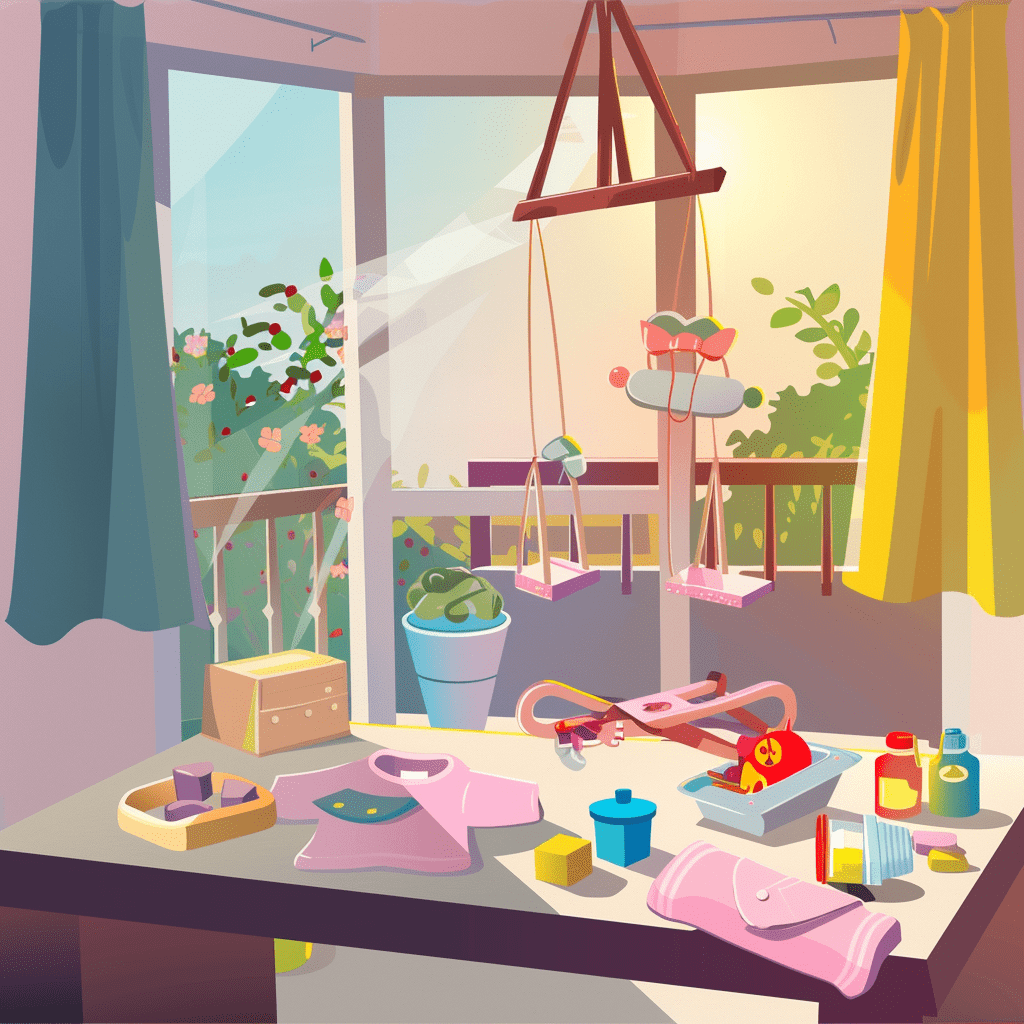Assessing the State and Safety of Old Baby Toys

When dealing with old baby toys, it’s crucial to check their condition, look for potential choking hazards, and make sure they are non-toxic and clean.
Examination for Wear and Tear
First, let’s check the toy for any signs of wear and tear. Look for cracks, chips, or broken parts. These can make the toy unsafe for babies. Soft toys should be inspected for loose seams or stuffing that might come out.
It’s also important to test moving parts. If a toy has wheels or hinges, make sure they still work properly. Additionally, batteries in electronic toys should be checked for leakage or corrosion. Replace old batteries to avoid any potential hazards.
Identifying Potential Choking Hazards
Choking is a significant risk with toys for young children. Small parts can easily become a choking hazard. We should inspect the toy to ensure everything is attached securely.
Be aware of any parts smaller than 1.75 inches in diameter, as they pose a greater risk. Use a simple choke tube tester, available in most baby stores, to verify safety. Broken pieces, even tiny ones, can also be extremely dangerous.
Ensuring Non-Toxicity and Hygiene
Baby toys should always be made from non-toxic materials. Check the labels for any harmful chemicals like BPA or phthalates. If the toy is old and labels are missing, it might be safer to dispose of it.
Additionally, hygiene is essential. We should wash or disinfect each toy, especially those that babies put in their mouths. Soft toys can often be cleaned in a washing machine, while plastic toys can be wiped down with a non-toxic cleaner.
Repurposing and Recycling Baby Toys

We can give old baby toys a new life through creative reuse, donations, and proper recycling, which helps reduce waste and benefits others.
Upcycling Ideas for Creative Reuse
Upcycling old baby toys can spark creativity and give them a new purpose. For example, we can turn stuffed animals into custom pillows by removing their stuffing and adding new ones.
Small plastic toys can be glued onto photo frames or used as quirky drawer handles.
For developmental toys, we can dismantle them to create sensory bins. It’s important to ensure the toys are clean and safe before transforming them into something new.
Donation Guidelines and Options
Donating baby toys can bring joy to other children and make room for new items. We should start by cleaning the toys and checking for broken parts.
Many places accept toy donations, such as daycare centers, hospitals, and charity shops.
It’s wise to contact the organization first to understand their needs. Only donate toys that are in good condition and safe to use.
Recycling Protocols and Materials
Recycling baby toys can save valuable materials like plastic and metals from going to waste. We can look for local recycling programs that accept hard plastics.
Check toy labels to find recyclable symbols. Sometimes, companies offer take-back programs for their products.
We need to separate toys into different materials—plastics, metals, and electronics—before recycling. This ensures that each part is properly processed.
Incorporating Old Toys into Developmental Play
Using old baby toys for developmental play can help our children reach important milestones. This includes aiding their physical growth, cognitive skills, and keeping play safe.
Choosing Toys for Different Developmental Stages
Selecting toys based on the child’s age and developmental stage is crucial. For infants, soft rattles and teethers help with sensory exploration and soothing gums. As they grow, tummy time mats and musical toys promote physical and cognitive development.
Preschoolers benefit from toys that encourage fine motor skills and hand-eye coordination. Puzzles and building blocks are great choices. These toys challenge their brains and improve dexterity. Choosing the right toys at each stage ensures our kids can play and grow effectively.
Toys That Support Physical and Cognitive Growth
Old toys can be great for developing physical and cognitive skills. Toys like mobiles and stacking cups promote these. For example, musical mobiles keep babies engaged, aiding their cognitive growth. Larger stacking toys help with fine motor skills and problem-solving.
Tummy time is essential for strengthening neck and shoulder muscles. Using old toys like tummy time mats can make this activity more engaging. Rattles and teethers also support sensory development, which is key for early learning. Old toys can be just as effective as new ones in aiding growth.
Safe Practices for Sharing and Reusing Toys
Safety is a priority when reusing old toys. We must always inspect toys for damage. Broken toys can be dangerous, so it’s best to discard them. Regular cleaning of old toys is also important to prevent germ spread. Use mild soap and water, or disinfectant wipes.
It’s also crucial to check for recalls on older toys. Not all old toys meet current safety standards. In addition, avoid letting babies put old toys in their mouths unless they are specifically teethers or designed for that purpose. By following these guidelines, we can ensure a safe and enriching play environment for our children.
I’m Cartez Augustus, a content creator based in Houston, Texas. Recently, I’ve been delving into different content marketing niches to achieve significant website growth. I enjoy experimenting with AI, SEO, and PPC. Creating content has been an exciting journey, enabling me to connect with individuals who possess a wealth of knowledge in these fields.

